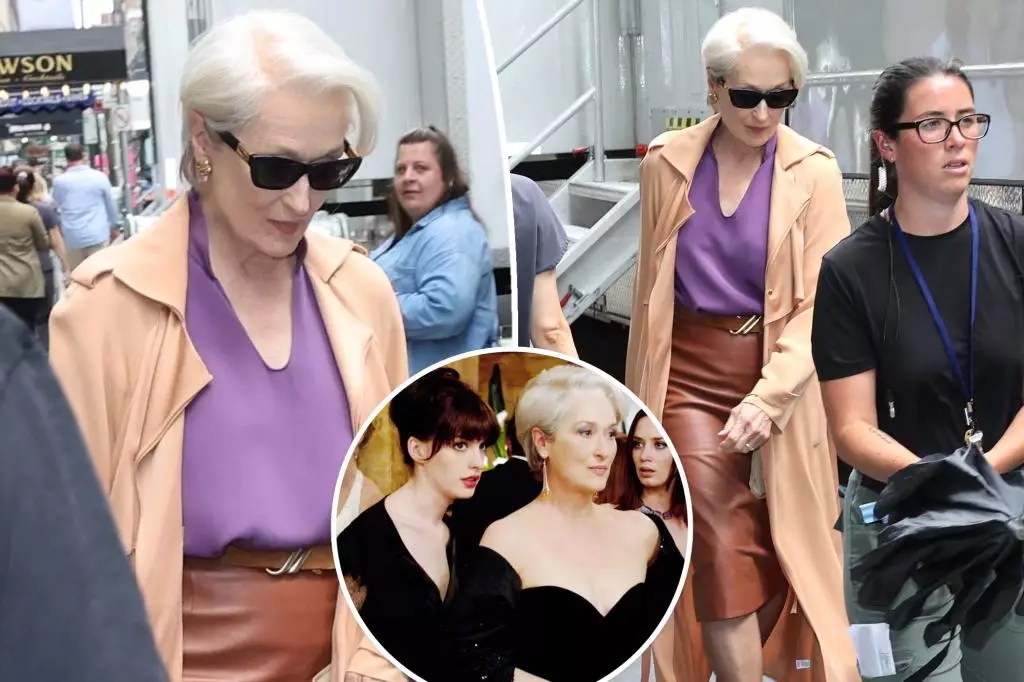The cinematic universe is once again ablaze with excitement as Meryl Streep reprises her legendary role as Miranda Priestly in the highly anticipated sequel to “The Devil Wears Prada.” Nearly two decades after the original captivated audiences with its wit, style, and incisive look into the cutthroat fashion industry, fans are eager to see what fresh narratives and dynamic character arcs this new installment will bring. The mere sighting of Streep on set, embodying her signature icy elegance with meticulous attention to detail, signals a continuation of her character’s complex legacy—one that balances ruthless ambition with undeniable charisma. Such a return underscores not only the cultural significance of Priestly but also highlights the enduring influence of fashion as a mirror to power and societal change.
Delving into Character Evolution and Industry Shifts
The original film was more than just a fashion romp; it was an incisive commentary on the sacrifices entailed in climbing the ladder of high society and the compromise of personal identity for professional success. Now, as Priestly faces the evolving landscape of print journalism and digital innovation, her character stands at an intriguing crossroads. The sequel promises to explore the dark yet fascinating transition from traditional print magazines to a digital-first era, reflecting real-world shifts that continue to reshape creative industries. It’s a compelling narrative that invites viewers to reassess the nature of influence, leadership, and authenticity in a media-saturated society. The inclusion of a fierce rivalry with Emily—played by Emily Blunt—adds depth to the storyline, emphasizing themes of ambition, rivalry, and changing allegiances.
The Power of Fashion as a Storytelling Tool
Costumes are more than mere aesthetics in this franchise; they serve as narrative devices that articulate character development and social commentary. Streep’s portrayal brings to life a character whose sartorial choices—like her signature tan trench coat, purple blouse, and brown leather skirt—are emblematic of her power and unyielding control. The return of iconic elements, such as her icy white pixie cut, reinvigorates the visual storytelling, reminding us how fashion functions as a language of authority and influence. Meanwhile, Anne Hathaway’s Andy Sachs—whose recent appearances show a shift towards more eclectic and expressive outfits—symbolize a protagonist emerging from the shadow of her former boss, gaining confidence and independence. The evolving wardrobe reflects broader themes of identity, resistance, and reinvention.
The New Cast and What It Tells Us About the Film’s Direction
Introducing fresh faces like Kenneth Branagh, Lucy Liu, Justin Theroux, and B.J. Novak injects new energy into an already rich narrative landscape. Branagh’s role as Priestly’s husband hints at personal stories and emotional depth beyond the workplace battles, potentially humanizing a character often viewed through a cold, authoritative lens. Liu and the others bring diversity and contemporary relevance, signaling that this sequel aims to resonate with a broader audience and reflect current societal dialogues around gender, power, and inclusion. This strategic casting choice hints at a more nuanced exploration of the characters’ personal lives, adding layers of complexity missing from the original.
Anticipation and Cultural Significance
Scheduled for release on May 1, 2026, the film has already ignited fervent speculation and excitement. Hathaway’s playful TikTok, referencing the “Cerulean” code from the original, demonstrates a savvy understanding of fan engagement and nostalgia. It solidifies this sequel not just as a continuation but as an ultimate celebration and revitalization of the franchise’s cultural relevance. “The Devil Wears Prada” has become a symbol of fashion’s power, female ambition, and the relentless pursuit of excellence. Its sequel holds the promise of exploring these themes with greater depth, relevance, and, undoubtedly, style.
In essence, the return of “The Devil Wears Prada” signifies more than just a film sequel. It embodies the enduring allure of narratives that blend fashion, power, and personal growth—reminding us that style is an expression of identity, and that leadership often requires embracing change without losing sight of one’s core. With a potent mix of nostalgia and modern sensibilities, this sequel is poised to redefine the cultural conversation around femininity, influence, and resilience in the contemporary age.







Leave a Reply